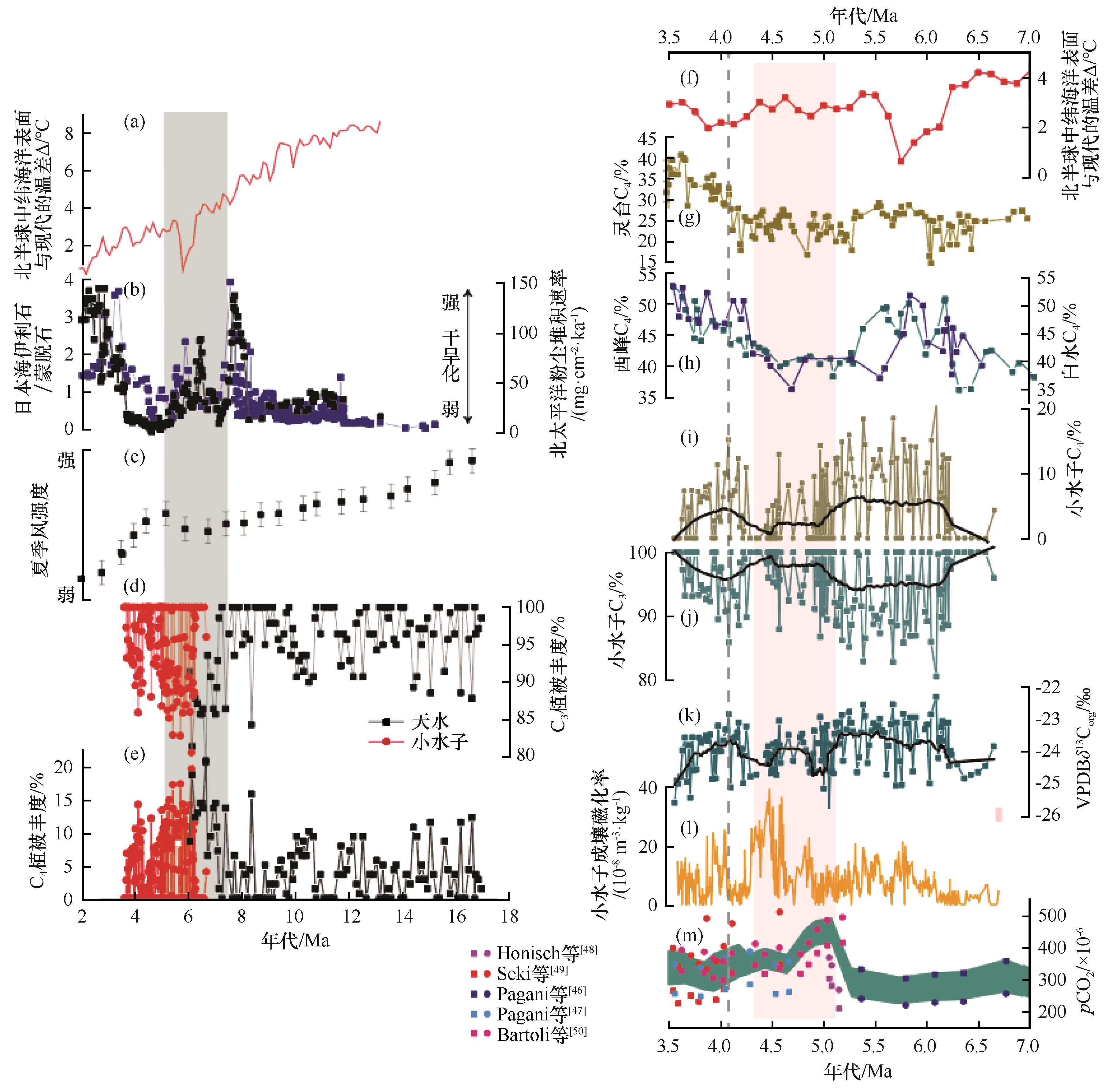青藏高原东北缘小水子地区晚中新世-上新世生态演化及其意义
|
|
李小苗,吴泽坤,彭廷江,马振华,冯展涛,李孟,郭本泓,宋春晖
|
Late Miocene-Pliocene ecological evolution on the northeastern Tibetan Plateau and its possible mechanism
|
|
Xiaomiao LI,Zekun WU,Tingjiang PENG,Zhenhua MA,Zhantao FENG,Meng LI,Benhong GUO,Chunhui SONG
|
|
图5 17~3.6 Ma青藏高原东北缘 C3/C4植被变化与全球气候对比图(左图)、7~3.6 Ma小水子与黄土高原C4植被变化与气候指标(右图)对比图
注:(a)、(f)为全球海平面年平均气温与现代温差?[1];(b)为日本海伊利石/蒙脱石?[52]与北太平洋粉尘通量?[53];(c)为东亚夏季风强度?[51];(d)、(e)为小水子与天水C3/C4植被重建[22];(f)为全球海平面年平均气温与现代温差?[1];(g)、(h)为灵台、西峰、白水和小水子C4植被丰度;(i)、(j)、(k)为小水子剖面C4、C3植被丰度与有机碳同位素的变化;(l)为小水子剖面土壤磁化率变化[45];(m)为大气CO2浓度重建[46-50]
|
Fig.5 Comparison of C3/C4 vegetation change from 17~3.6 Ma in northeastern Tibetan Plateau and global climate proxy (left), and C4 vegetation in the Loess Plateau during 7~3.6 Ma (right)
Note:(a),(f)Annual mean global sea level temperature and modern temperature difference reconstruction?[1];(b)Illite/smectite ratio of the Sea of Japan[52],dust flux of North Pacific[53];(c)Relative strength of Asian summer monsoon?[51];(d),(e)C3 and C4 plant relative abundance of Xiaoshuizi and Tianshui Basin?[22];(f)Annual mean global sea level temperature and modern temperature difference reconstruction?[1];(g),(h)C4 plant relative abundance reconstructed from Lingtai,Xifeng and Baishui profile;(i),(j),(k)Variations of C4,C3 plant abundance and organic carbon isotope;(l)Variations of soil magnetic susceptibility in Xiaoshuizi profile?[45];(m)Atmospheric CO2 reconstruction concentration[46-50]
|
|

|
|
|

